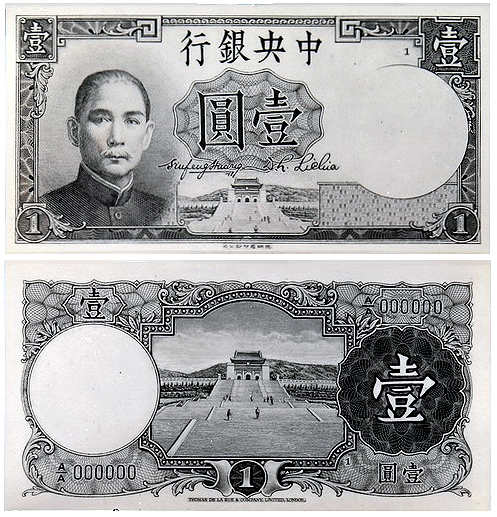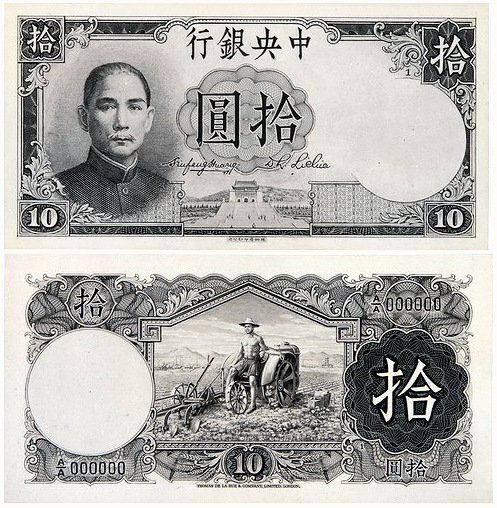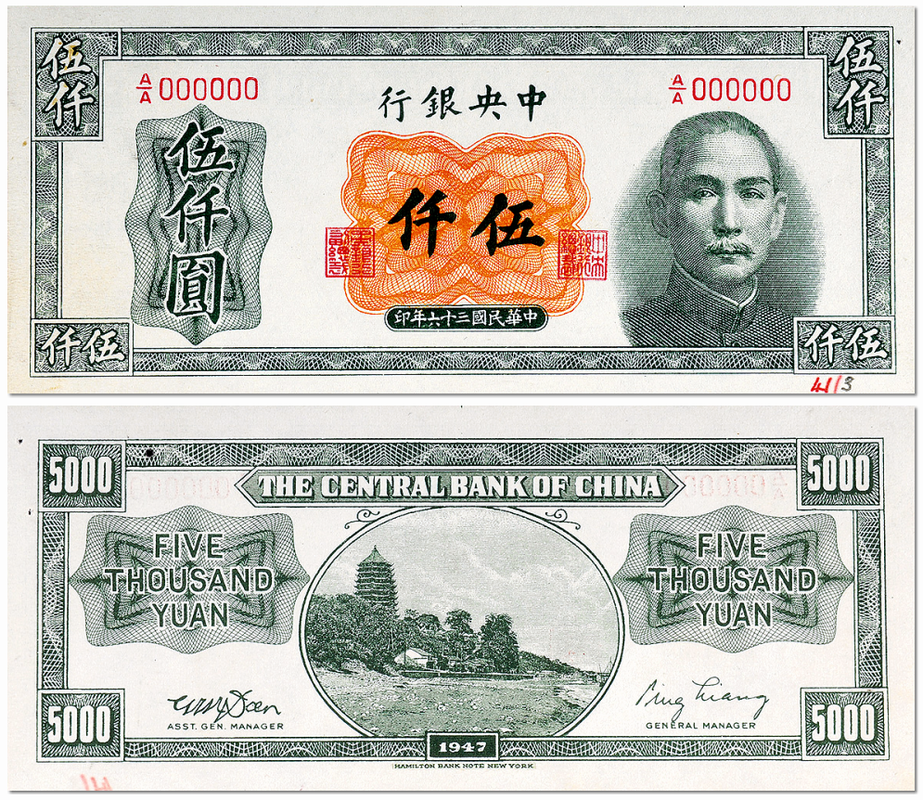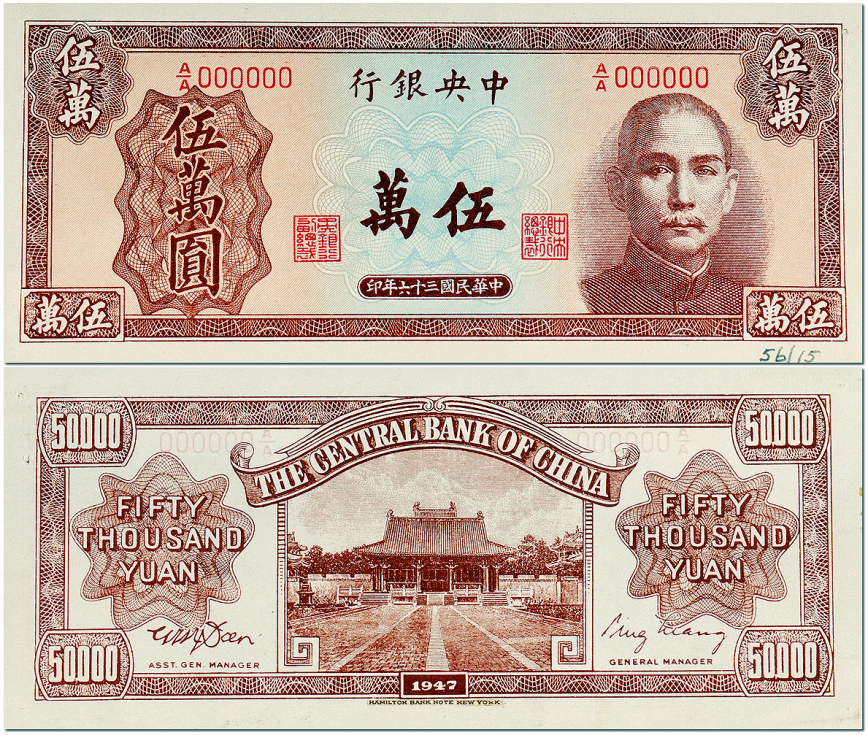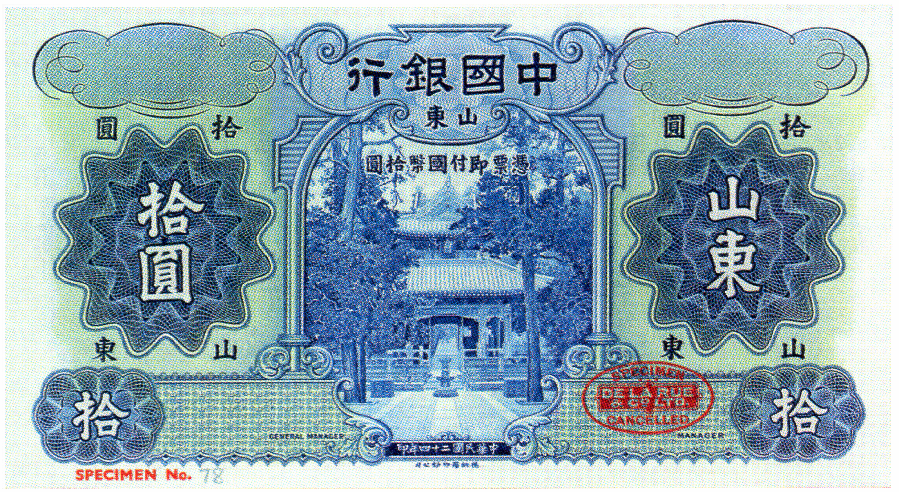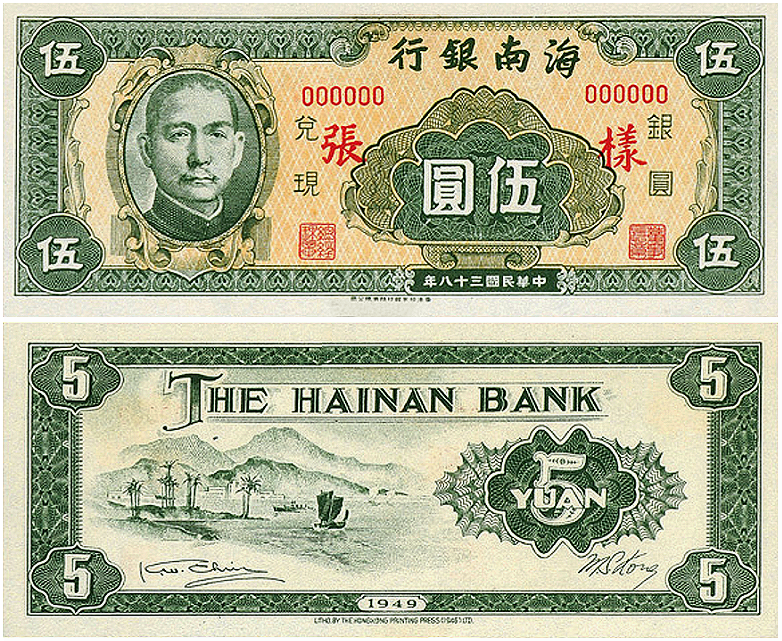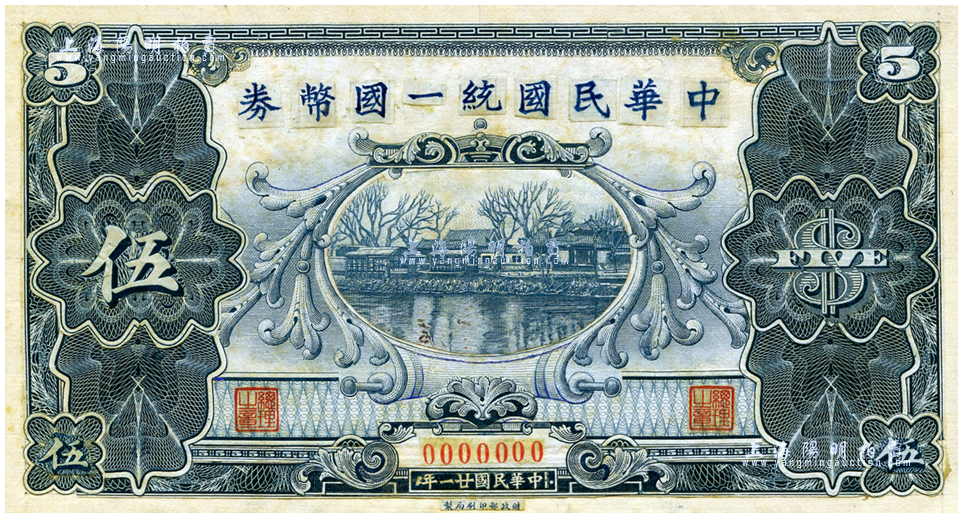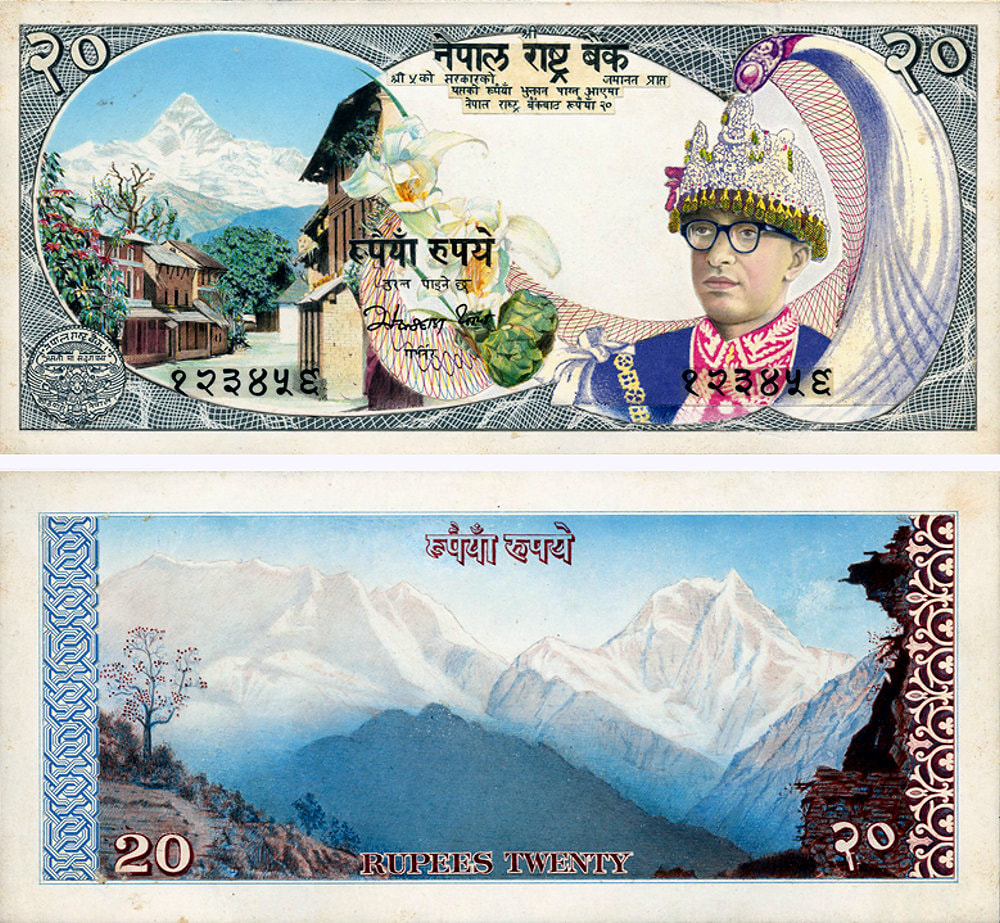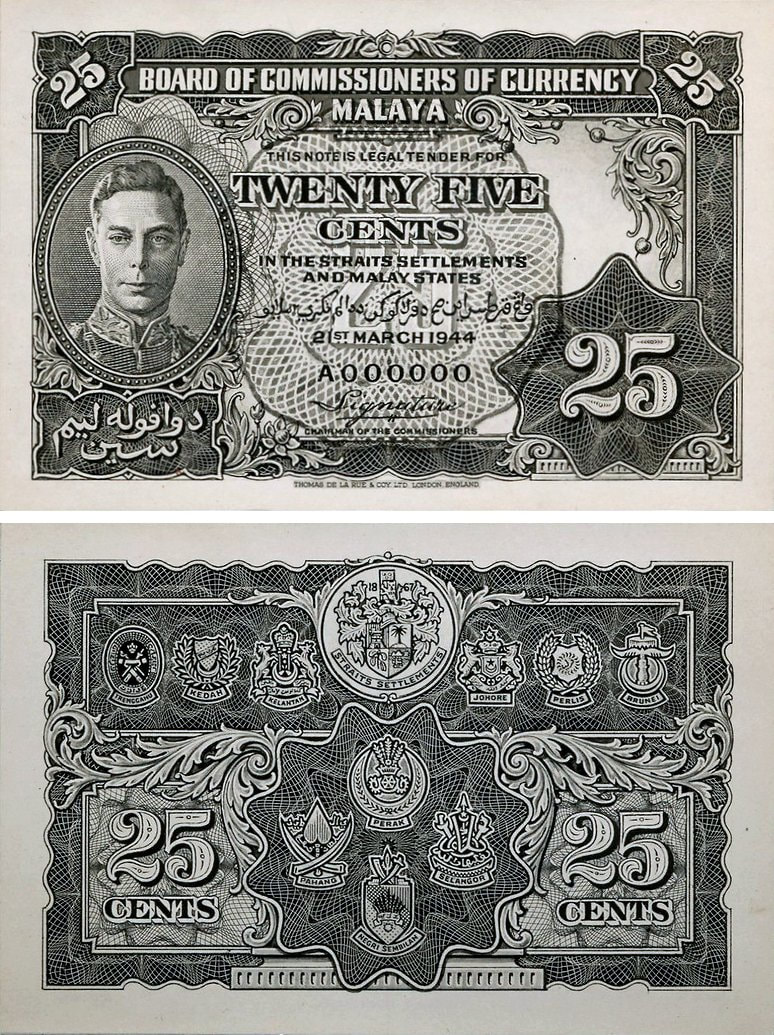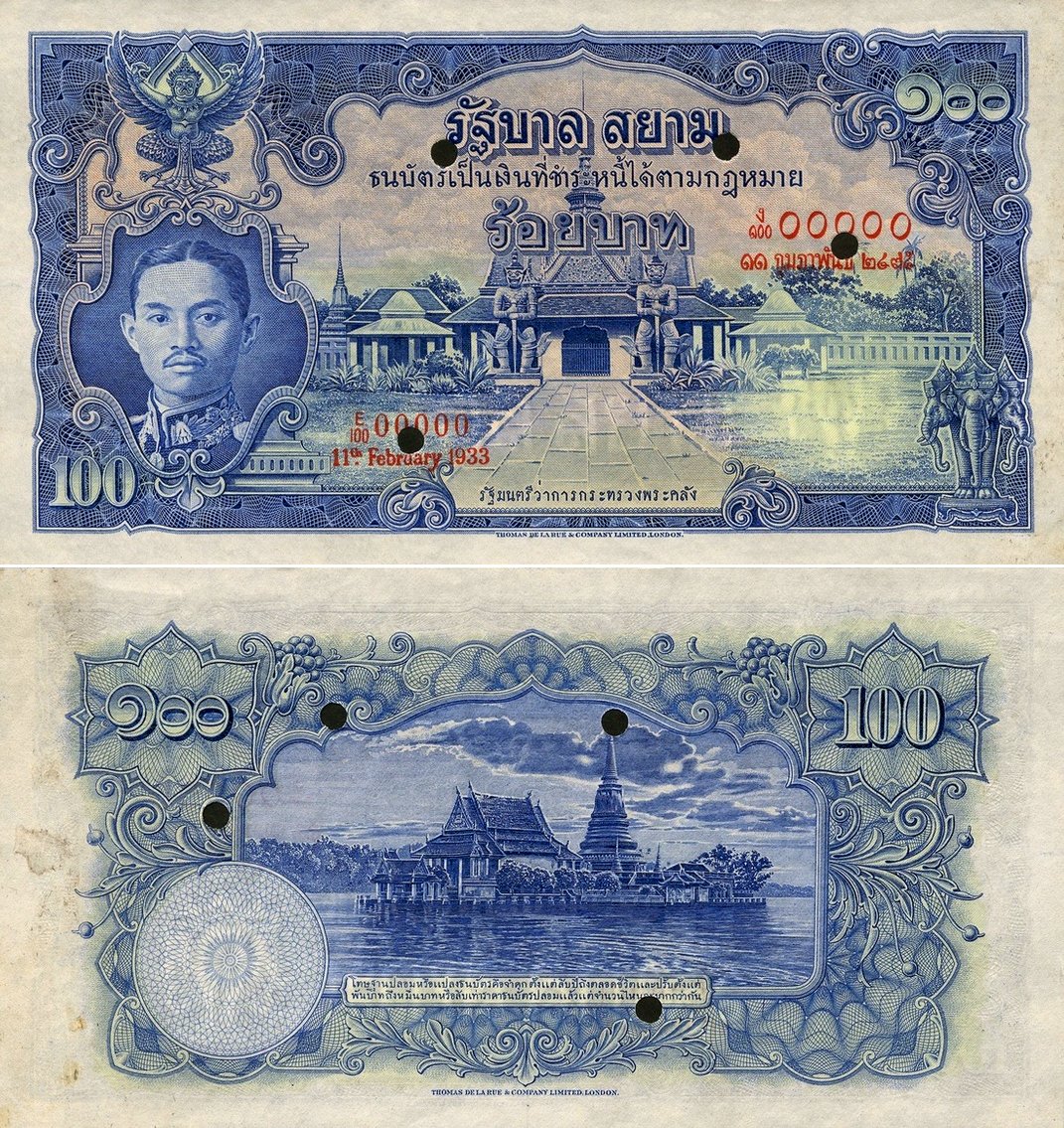Nonesuch Notes - China
|
Updated: March 20 2018
|
A display of unused designs, specimens and little known notes by government banks and other major issuers. These notes are not displayed to scale. More examples will be added periodically.
This introductory section contains a mixture of examples proposed for different government and other issuers. Subsequent sections will deal with one type - or a specific issuer.
This introductory section contains a mixture of examples proposed for different government and other issuers. Subsequent sections will deal with one type - or a specific issuer.
The Central Bank of China
|
A spectacular colour trial specimen for the Central Bank of China 100 Yuan of 1936 by Waterlow & Sons. Unadopted, but a similar colour scheme would be used for the scarce 500 Yuan of this series. The reverse depicts the The Dacheng Hall of the Temple of Confucius, Qufu, Shantung (Shandong). The SCWPM refers to this as the 'Palace of China at Peking'. The source of that error is not known and has long helped to obscure the thematic nature of the Central Banks 1936 currency issues by diverse printers. For more information: The Confucian Series of the Central Bank of China |
|
This is one of the more unfortunate losses; black and white proofs of what would have been a superb series for the Central Bank of China by Thomas De La Rue. These would arguably have been the printers best work produced for China. The original colour versions of these engravers/artists proposals still exist.
Due to the bank official signatures used and the depiction of the Sun Yatsen Mausoleum, these designs can be dated to somewhere between 1936 and 1941. De La Rue's London headquarters was destroyed in a blitz on September 11 1940. This had a considerable impact on the companies ability to meet existing orders for several years, which may be among the reasons these were never adopted. Further, the increasing inflation and the depiction of the Nanking Mausoleum may be among the factors - whether due to the loss of Nanking to the Japanese in 1937, or, if designed later (for example the Farmers Bank of China 1935 and 1941 series depicted scenes from Manchuria long after the establishment of Manchukuo), the extensive use of the mausoleum on the currency of the Japanese puppet Central Reserve Bank of China. Interestingly, no English titles or denominations are incorporated into the back designs (as was then usual). |
|
The Central Bank of China 100 Customs Gold Units of 1947. Listed in the 2009 edition of the SCWPM as a specimen - and incorrectly described - (P 333); this note however clearly had a brief period of issue, as demonstrated by the rare and lightly circulated example shown right.
This is one of only two horizontal Customs Gold Units notes ever produced; the other also by Waterlow is the somewhat more common (and more attractive) blue, brown and multicolour printed 500 CGU of 1947. Printed by Waterlow & Sons Ltd, London. |
|
The Central Bank of China 1947 5000 Yuan.
A specimen of a proposed design developed by the Hamilton Bank Note Company of New York. This and a companion denomination (below) failed to materialise. Hamilton never printed currency for China so these notes most likely represent a proposal by the company that was rejected by the bank or the government. The back depicts the Liuhe Pagoda in Hangchow (Hangzhou), also known as the Six Harmonies pagoda, located on the picturesque Yuelun Hill. It was rebuilt in 1165 and restored in recent decades. This building appears on several Central Bank of China and Peoples Bank of China notes during the mid to late 1940s. |
|
The Central Bank of China 1947 50,000 Yuan.
A specimen of a proposed design (of 2 underprint colour versions) developed by the Hamilton Bank Note Company of New York. This and a companion denomination (above) failed to materialise. The back depicts part of one of the Manchu Imperial tomb complexes at Mukden (Shenyang), Manchuria (North Eastern Provinces). |
The Bank of China
The Peoples Bank of China
The Provincial Banks
|
The Hainan Bank 5 Yuan of 1949. A rarely seen example of this missing denomination from the series. Only specimens are known to exist; the reasons for this denomination being unissued are not known. As currency is not always issued in order of denomination it is possible that the notes were prepared but simply never made it into circulation before the series was cancelled and withdrawn. The back scene most likely is a view of the mountains of Southern China seen from the shore of Hainan Island. Hainan was one of the last parts of China to fall to the Communists, who took control in May 1950. |
Miscellaneous Chinese
Miscellaneous Asian notes
|
Siam (Thailand)
Right: Government of Siam, specimen-trial 100 baht, 11 February 1933. Printed by Thomas De La Rue & Co. This is the only known example. The portrait is of King Prajadhipok (Rama VII) 1893-1941, the last absolute monarch and the first in centuries to abdicate, in 1935, due to circumstances following from the 1932 revolution which brought about a constitutional monarchy. |

